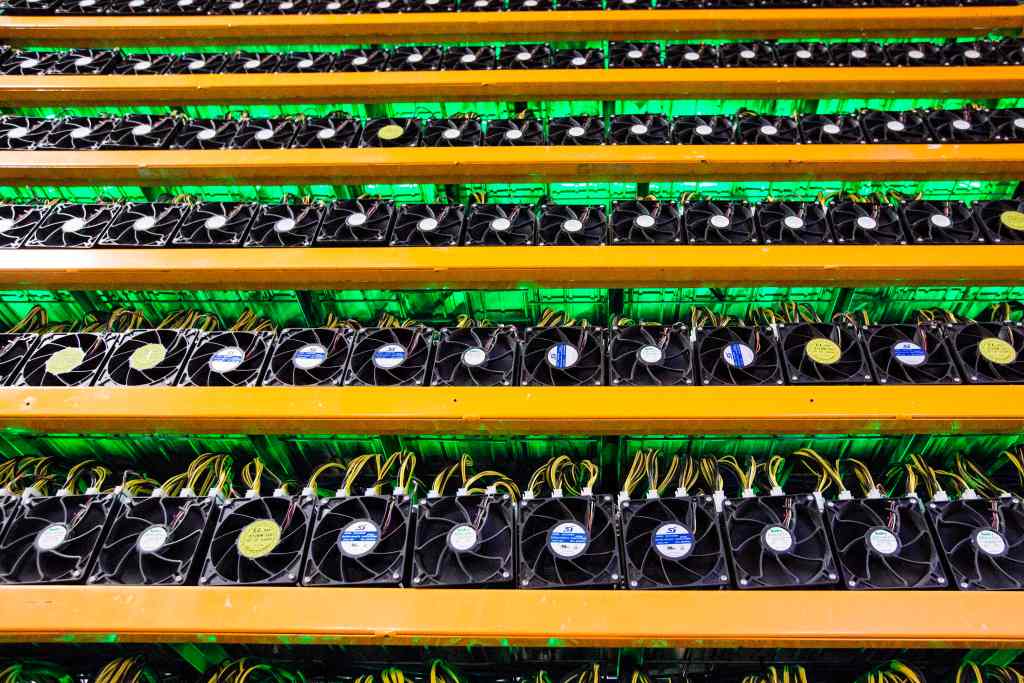Wednesday on the show, we talked about cryptocurrency’s impact on the environment. Thursday, we’re talking about its impact on the semiconductor shortage. Miners and gamers are competing for high-powered graphics chips, also known as graphics processing units, or GPUs. These are incredibly hard to find right now because of increased pandemic demand.
Most are made at the same foundry in Taiwan that’s struggling to produce enough chips for every industry. And yes, crypto miners are snapping them up, too. So to protect their GPU supply, companies like Nvidia are now producing mining-specific chips. I spoke with Anshel Sag, a semiconductor analyst at the tech advisory firm Moor Insights & Strategy. The following is an edited transcript of our conversation.

Anshel Sag: Crypto definitely takes away, to a certain degree, from everything else because it makes certain companies that produce the hardware for crypto to prioritize more of their wafers toward a certain type of product. And what ends up happening is it does put a little bit of a strain on the entire ecosystem, but it’s mostly contained within the gaming market like it had in the past. But with a global shortage, what winds up happening is it starts to take away from other places that are needing it. And as a result, neither are really getting enough supply because there’s just only so much [silicon] wafer capacity in the world.
Molly Wood: So we’re seeing that companies are pivoting to specifically making hardware for mining. Is that just a smart business decision, or are they trying to protect the other parts of their business too?
Sag: I think if you look at the Nvidias of the world, they are absolutely creating crypto-specific hardware, because their core business, which is gaming, is not actually getting enough supply of GPUs for gaming because people are snapping up thousands of these GPUs for mining. So they went out and created a custom mining chip so that miners would buy that. And also, whenever the mining boom peters off, like it has in the past, they will no longer be dumping these heavily used cards back into the market and causing issues with failures and things like that.
Wood: Tell me more about this specialized mining chip. It sounds like one benefit is that it’s more power-efficient.
Sag: Yeah, it’s optimized for crypto mining, which it does draw about the same amount of power as the gaming cards did. But I have a feeling that they’ll probably be able to optimize it better, to be even more power-efficient, which is actually one of the most key metrics for mining. Because ultimately, once you’ve purchased the GPUs, your next-biggest cost is always going to be power. And the more efficiently you can generate those cryptocurrencies with mining, the more profitable your operation.
Wood: We’re in a moment where, it seems like, we need to be producing semiconductors for all kinds of the global economy. Does creating mining-specific hardware take away from that effort?
Sag: It does to a degree. However, I also believe that having mining-specific hardware potentially prevents someone from buying a general-purpose GPU, and instead, leaving that for someone who needs it, rather than trying to use it for mining. So I think it’s a double-edged sword, where you have to give up some wafer capacity to build these chips. But by building these chips, you also satisfy some demand and prevent them from taking it away from somebody else. And I think that’s kind of the goal with making this mining-specific hardware.

Related links: More insight from Molly Wood
Nvidia said in April it expects to make $150 million in the first quarter of fiscal 2022 off mining chips. But back in February, when it announced the new mining chip, it estimated it would make just $50 million from the chip. As the prices of Bitcoin and Ethereum have gone nothing but skyward, so have the company’s sales estimates. It released updated sales numbers, saying it’s tracking above its previously forecast $5.3 billion for the quarter. So far, crypto chips are a small portion of Nvidia’s overall revenue, but that rate of climb could alter some long-term planning.
One other interesting note: Nvidia’s new chips, at least, are specifically targeted for Ethereum mining. Not sure what the difference is, but it seems like a bet on that particular currency. And in its blog post announcing the new CMPs, or cryptocurrency mining processors, Nvidia makes no bones about its goals. It said it’s reducing the hash rate on its highest-powered GPUs. And it said, “With CMP, we can help miners build the most efficient data centers while preserving GeForce RTX GPUs for gamers.” Hands off, hashers.
But speaking of market demand, the tech site Tom’s Hardware reported last week that a Chinese crypto mining hardware company called Bitmain has reportedly placed a big order with TSMC for mining-specific chips that use its most advanced, 5-nanometer fabrication process. TSMC is the big Taiwanese chip foundry that’s the bottleneck for semiconductor production right now. And the reason it matters is that this is the process that Chinese telecom-equipment giant Huawei, as well as TSMC’s biggest customer, Apple, use for fabricating their laptop and smartphone chips, including Apple’s new M1 chip. And the reason I’m geeking out so much right now is way more simple: If in the middle of a global chip shortage, crypto-specific chip production starts messing with MacBooks and iPhones, it’s going to be like a clash of the fanboys, and I am pulling up a chair.
The Link LonkMay 13, 2021 at 04:52PM
https://ift.tt/3hjX1lr
Companies now make computer chips specific to cryptocurrency mining - Marketplace
https://ift.tt/2RGyUAH
Chips

No comments:
Post a Comment